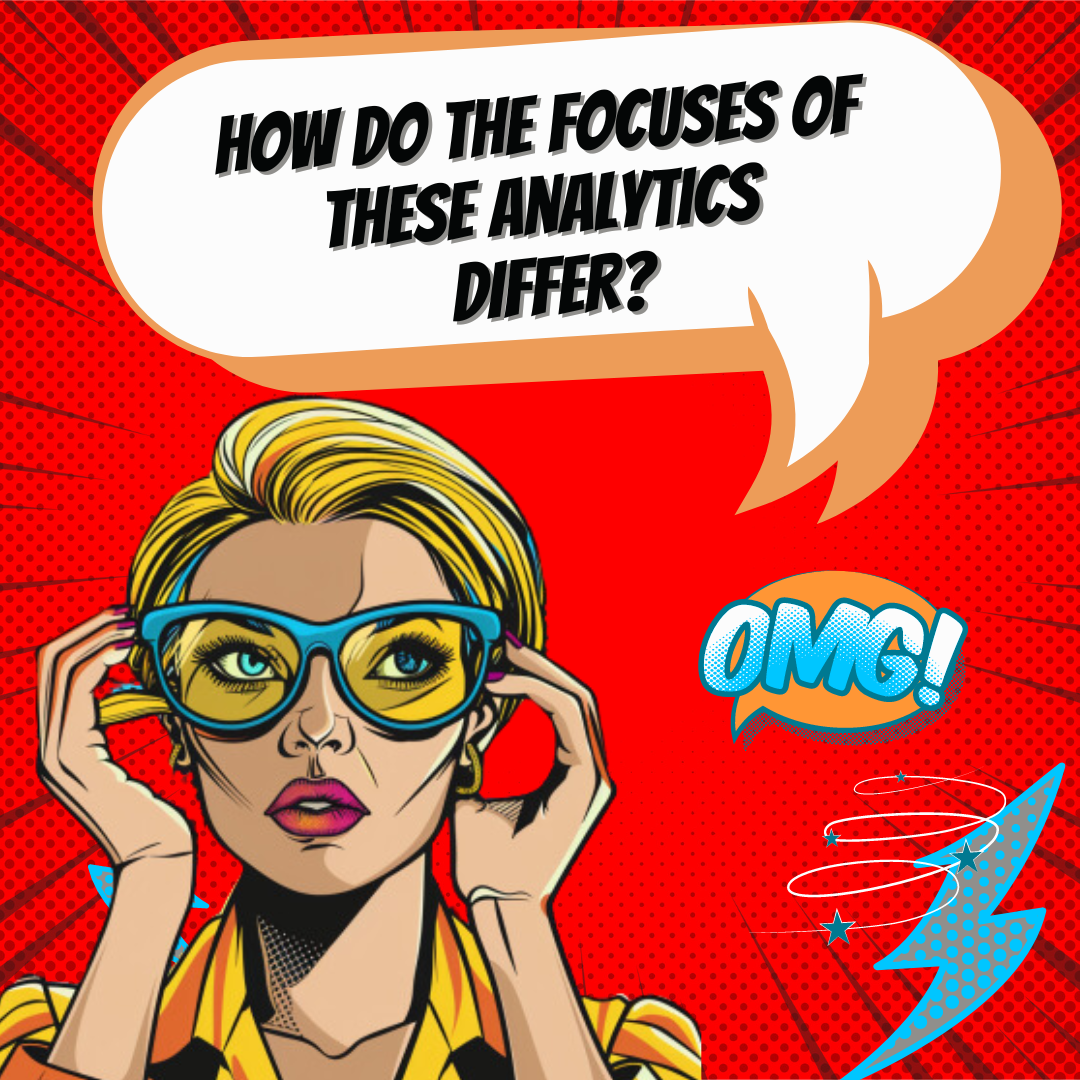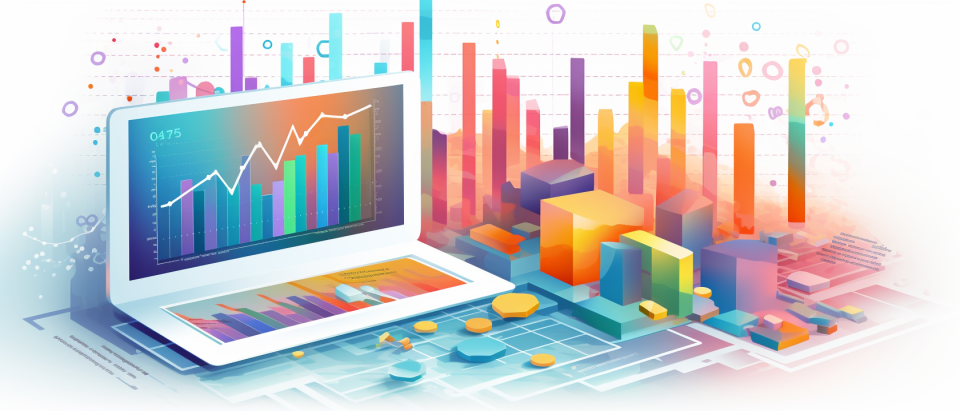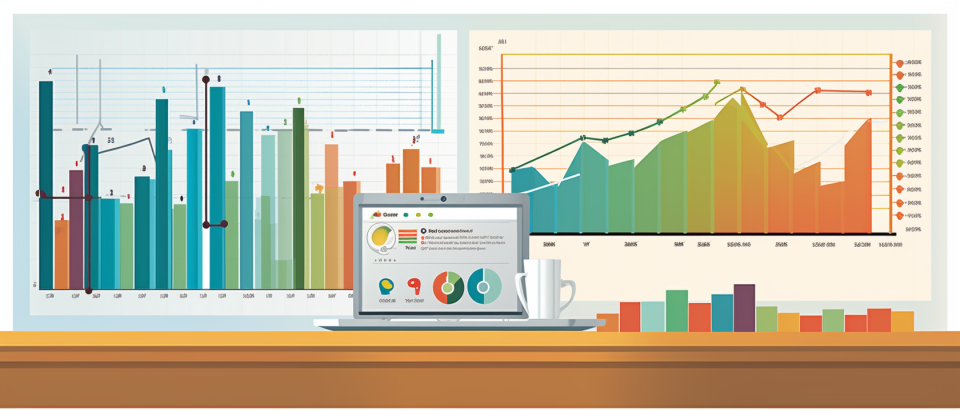Key Takeaways
✅ Distinct Focus: Marketing analytics zeroes in on consumer and market data to drive marketing strategy, while data analytics spans a broader set of objectives, including uncovering insights across various industries and fields.
✅ Specific vs. General Application: The tools and methodologies of marketing analytics are tailored to understand market nuances, predict consumer behavior, and evaluate campaign performance. Conversely, data analytics employs a wider array of statistical techniques to analyze data for various purposes beyond marketing.
✅ Strategic Impact: Although both are critical for strategic decisions, marketing analytics directly informs marketing tactics and customer engagement strategies, while data analytics can influence a range of strategic business decisions by providing a data-backed foundation for action.

Introduction
Are you trying to make sense of the vast world of analytics? Dive into our eye-opening exploration, where we uncover the critical distinctions between marketing analytics and data analytics. Imagine marketing analytics as your compass in the commercial jungle, adeptly guiding you through consumer habits and market whispers, all to craft campaigns that resonate with your audience. Meanwhile, data analytics stands as the decoder of data puzzles, turning numbers into narratives and statistics into strategies.
Join us on a journey through the realms of data, from understanding what drives your customers' choices to unravelling the complex tapestries of information that shape decisions across industries. Whether you're a marketing maestro or a data detective, this article will enhance your understanding and sharpen your skills, empowering you to harness the full power of analytics in your field.
Let's embark on this enlightening path together, outlining the unique purposes, weaving distinct narratives, and pinpointing the key differences that set marketing analytics and data analytics apart. Prepare to differentiate, conceptualize, and apply these insights to catapult your strategies into success!

Definition and Overview
A. Definition of Marketing Analytics
Marketing analytics is an area that delves into the data directly related to marketing efforts. It employs the analysis of customer behavior, website traffic, and social media engagement with the goal of enhancing the effectiveness of marketing strategies and campaigns.
B. Definition of Data Analytics
Data analytics is the comprehensive examination of data sets from varied sources to uncover patterns, correlations, and trends. This discipline encompasses financial data, operational data, and customer data, transcending the realm of marketing to inform strategic decision-making across an organization's various functions.
Objectives and Purpose
A. Objectives of Marketing Analytics
The primary aim of marketing analytics is to optimize marketing activities. It scrutinizes the performance of marketing initiatives, evaluates return on investment (ROI), and deduces customer preferences and responses to certain marketing actions. The insights garnered are utilized to refine marketing tactics, enhance customer targeting, and ultimately, boost sales and customer loyalty.

B. Objectives of Data Analytics
Data analytics seeks to assist organizations in making data-driven decisions across all sectors of the business. The insights obtained can support companies in identifying efficiencies, anticipating market trends, and making strategic decisions regarding product development, operational improvements, and financial planning.
Narrative Writing
A. Marketing Analytics Narrative
Marketing analytics creates a story of how a brand's marketing endeavors resonate with its audience. By examining metrics related to consumer interactions with marketing materials, businesses can tailor their communications to better align with their target audiences’ preferences and increase the effectiveness of marketing campaigns.
B. Data Analytics Narrative
Data analytics constructs an overarching narrative concerning a company's operations, finances, and customers. It gathers and analyzes data from multiple sources beyond just marketing, allowing firms to understand broader patterns and trends that influence the entire business landscape.

Key Differences
A. Approach and Methodologies
The distinction between marketing analytics and data analytics lies in their respective scopes and methodologies. Marketing analytics employs a range of specialized tools and methods focused on understanding and predicting customer behavior, while data analytics uses a wider variety of techniques to analyze data from multiple facets of the business.
B. Conceptualizing Data Analytics in Marketing
In applying data analytics to marketing, companies can leverage broader datasets to inform their marketing strategies. For instance, insights from sales data or customer service interactions can augment marketing analytics by providing a more holistic view of the customer journey.
C. Market Research, Consumer Behavior, and Customer Attitudes
Marketing analytics heavily emphasizes market research and the study of consumer behavior and attitudes. It seeks to understand the 'why' behind customer actions, enabling personalized marketing strategies that cater to their desires and needs.

D. Analytical Tools and Techniques Used in Marketing Analytics
The tools and techniques specific to marketing analytics include customer relationship management (CRM) platforms, web analytics tools, social media monitoring applications, and marketing automation software. These tools provide key performance indicators relevant to marketing, such as conversion rates, click-through rates, and social media sentiment analysis.
While recent statistics can provide context for the performance of marketing analytics, it’s vital to understand that such metrics are dynamic and vary by industry, campaign type, and a multitude of other factors, rendering a one-size-fits-all statistic less meaningful. Instead, it’s crucial for marketing professionals to define and monitor metrics that are directly relevant to their specific goals and campaigns.
AI Marketing Engineers Recommendation
While both marketing analytics and data analytics play a crucial role in informing business strategies through the use of data, their focus areas and applications differ significantly. To excel in your endeavors and leverage the power of data-driven decision-making, it’s essential to comprehend these differences to employ the right analytical practices for your specific needs.

Marketing Analytics:
Marketing analytics primarily focuses on understanding and optimizing marketing campaigns and customer interactions. It involves the collection and analysis of data related to marketing performance, with an aim to gauge the effectiveness of marketing tactics and to improve the return on investment (ROI) from these activities. Here’s how it stands out:
- Customer-centric: Emphasizes deciphering customer behavior, preferences, and engagement levels with marketing content.
- ROI-focused: Aims to quantify the success of marketing campaigns in terms of sales, conversions, and customer acquisition costs.
- Channel analysis: Examines the performance across different marketing channels (social media, email, search engines) to allocate resources effectively.
- Predictive modeling: Uses historical data to forecast future trends and customer responses to various marketing strategies.
Data Analytics:
Data analytics is a broader field that encompasses the techniques and processes of analyzing raw data to make conclusions about information. It’s not limited to marketing data and can extend to other areas of business like operations, finance, and human resources. Below are key aspects of data analytics:
- Broad application: Involves the analysis of various forms of data from across the entire organization.
- Problem-solving oriented: Aims to uncover actionable insights that can resolve business problems or capitalize on opportunities.
- Advanced techniques: Utilizes a range of methods from descriptive analytics (what happened) to predictive analytics (what could happen) and prescriptive analytics (what should be done).
- Data integration: Often requires the amalgamation of disparate data sources for a holistic view of business performance.

Synergizing Marketing and Data Analytics:
For businesses seeking to enhance their marketing efforts, integrating marketing analytics with broader data analytics is key. This integrated approach enables a more comprehensive understanding of customers that extends beyond just marketing interactions. Leveraging insights from data analytics, marketers can tailor their strategies to align with broader business objectives and customer needs.
When venturing into the intersection of these fields, the AI Marketing Engineers excel in unifying both marketing and data analytics. We harness advanced analytics to refine your marketing strategies, ensuring your campaigns are not only creative but also robustly data-informed, driving tangible results for your business.
Actionable Insights:
1. Leverage Predictive Analytics: Utilize data analytics techniques to predict future consumer behavior. This will allow for more effective targeting and personalization in your marketing efforts.
2. Campaign Attribution Analysis: Apply marketing analytics to determine which campaigns are driving sales and contributing to your bottom line the most.
3. Integrated Marketing and Business Strategy: Use insights from both marketing and data analytics to inform your business strategies, ensuring a cohesive approach that maximizes ROI.
4. Data Quality Management: Prioritize the collection and maintenance of high-quality data, as both marketing analytics and data analytics depend on accurate data for optimal results.
5. Continuous Learning and Adaptation: Stay updated with the latest analytical tools and techniques, and continuously adapt your strategies based on real-time data to maintain a competitive edge.
By understanding and applying the distinctive qualities and synergies of marketing analytics and data analytics, businesses can make more informed decisions, create more nuanced strategies, and achieve sustainable growth.

Conclusion
In conclusion, marketing analytics and data analytics are complementary yet distinct disciplines within the broader context of data-driven decision-making. Marketing analytics is deeply rooted in understanding and leveraging consumer behavior and market trends to craft impactful marketing strategies. It revolves around the specific goal of optimizing marketing efforts by deriving insights about customer attitudes, preferences, and actions.
Through market research, customer feedback, and other relevant data sources, marketing analytics uncovers pathways to effectively engage with the target audience and drive business growth.
On the other hand, data analytics encompasses a broader scope, applying rigorous statistical analysis and modeling across various types of data to uncover patterns and insights. This field is not limited to the realm of marketing but is integral to operations, finance, healthcare, and many other sectors requiring data interpretation to inform strategic decisions.
Both areas are critical in today's data-rich environment, each playing a pivotal role in guiding strategic decisions. Marketing analytics informs the creation and optimization of customer-centric strategies while data analytics provides a foundation for understanding and leveraging data in varied contexts. However, their distinction lies in the and the business problem at hand.

FAQs
Marketing analytics is focused on analyzing data to understand customer behavior, identify trends, and improve marketing strategies to drive business growth. This includes collecting and analyzing data on customer interactions, purchasing behavior, and marketing campaigns.
On the other hand, data analytics focuses on analyzing vast amounts of data to identify patterns, trends, and insights that can help businesses make better decisions and drive growth. Data analytics can be used for a wide range of purposes, including marketing, finance, operations, and more.
Marketing analytics typically uses data sources such as customer relationship management (CRM) software, web analytics tools, social media platforms, and marketing automation systems to collect and analyze customer data.
Data analytics, on the other hand, can use a wider range of data sources, including structured and unstructured data, such as sensor data, machine-generated data, and transactional data.
Key metrics used in marketing analytics include website traffic, conversion rates, lead generation, customer acquisition, and customer lifetime value.
Key metrics used in data analytics can vary by industry and business need, but some common metrics include revenue, customer lifetime value, customer churn, and customer satisfaction scores.
The insights from marketing analytics are used to improve marketing strategies, optimize customer experiences, and drive business growth.
The insights from data analytics are used to make data-driven decisions that can improve operations, reduce costs, increase revenue, and drive business growth.






